Classroom Reflections, Revisions, and Real Learning By Martin Richards 1
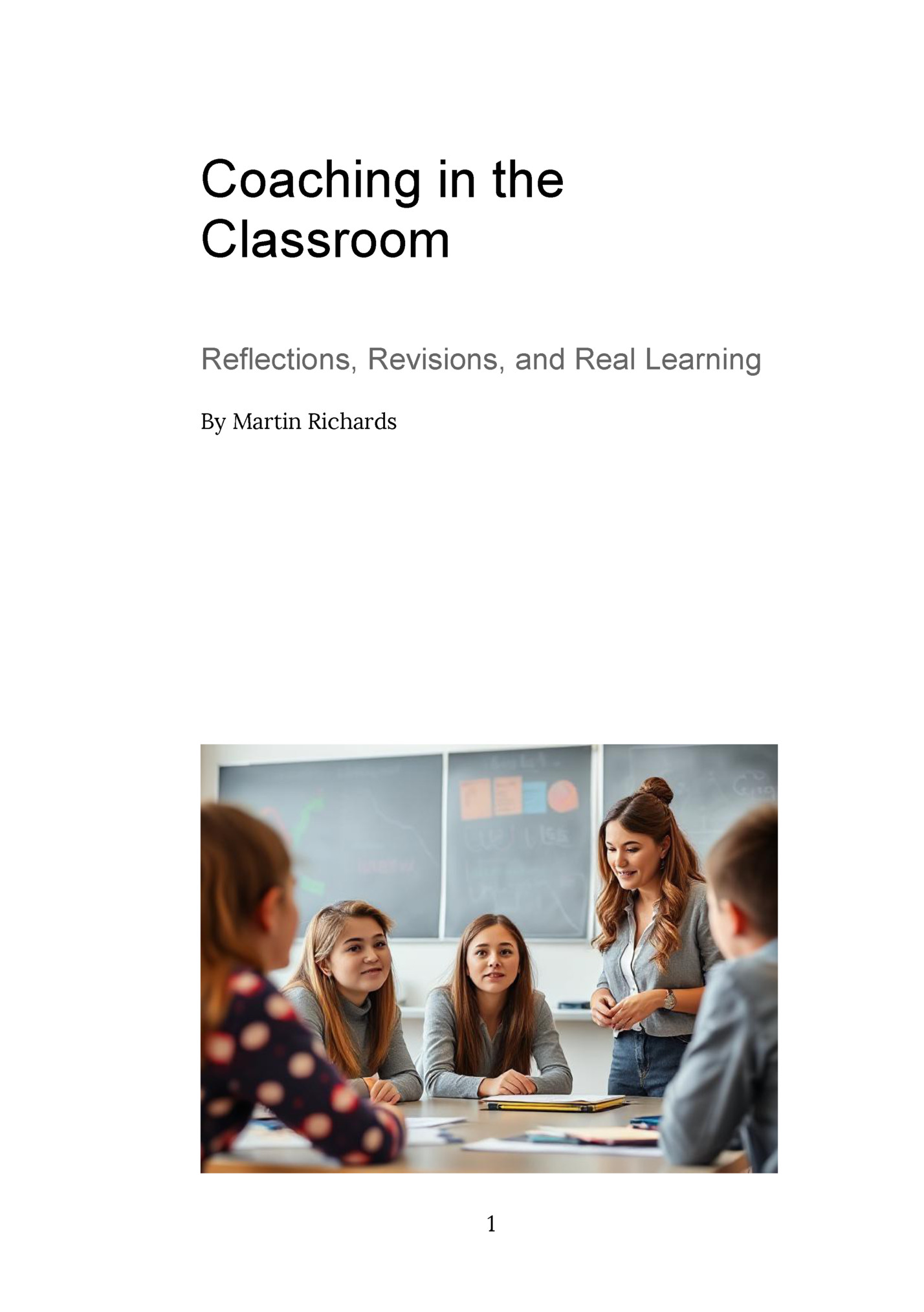
Martin Richards (born 1956 ) started work as a Mathematics Teacher. He took the experiential PCGE (Post Graduate Certificate of Education) course. A handful of his teachers influenced both of these choices. He taught at a Secondary School in the UK and a Primary School in Sweden. He started a business as an independent English trainer in Sweden. Whilst building his business, Martin also worked within the Swedish adult education world. He taught English in collaborative study circles. In his business he developed and tested a range of teaching tools and strategies with adults. He created DirectLine, a bespoke one-to-one Business English training service for company executives. Through DirectLine, Martin explored the roles of teacher, trainer, coach and mentor. Martin trained as a Co-Active Coach through CTI, the Coaches Training Institute. He gained the CPPC (Certified Professional Co-Active Coach) certification. He also received the ACC (Associate Certified Coach) credential. Being a coach enriched his teaching skills. His clients gained confidence and results. 2
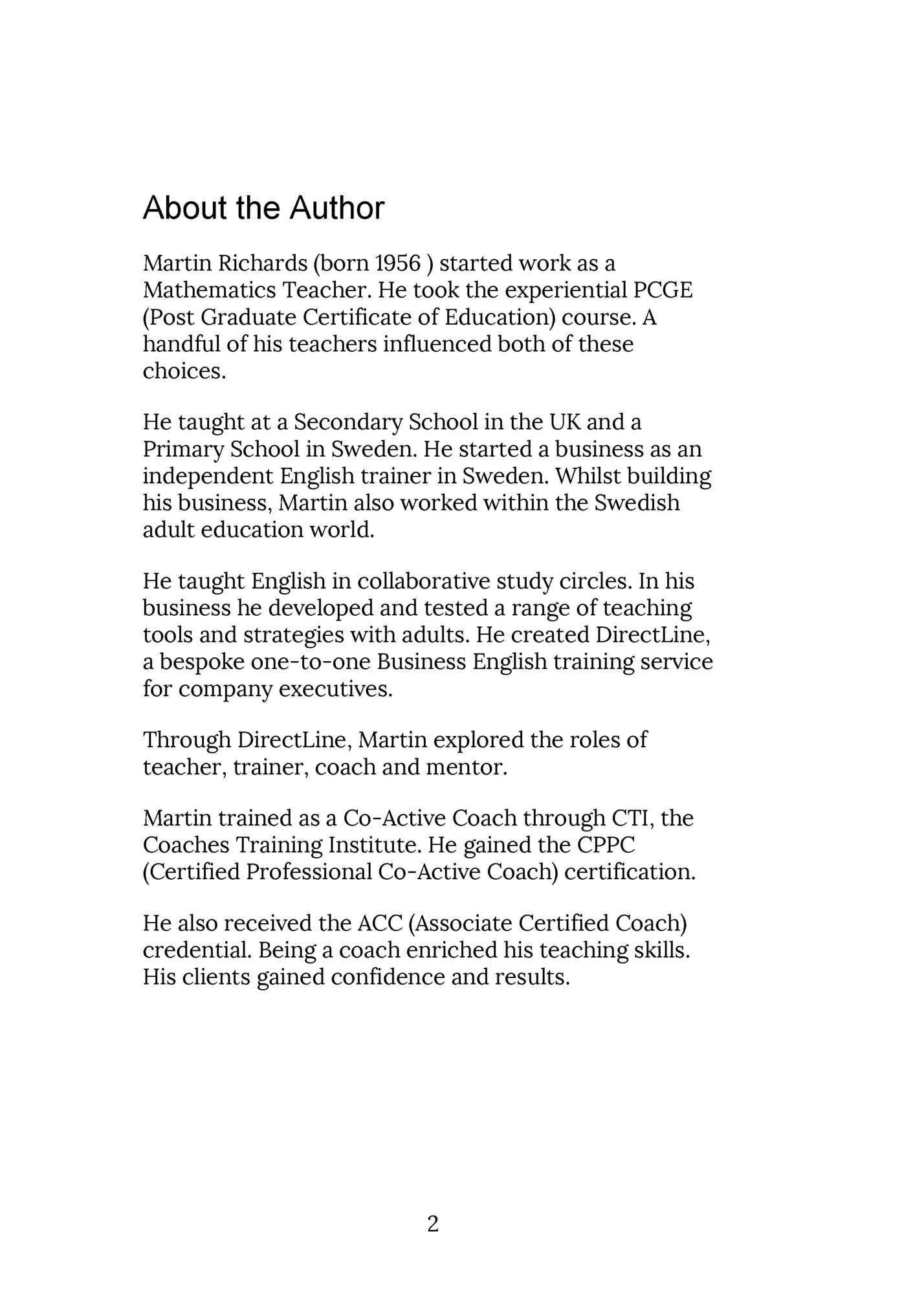
teacher at an International School. He combined teaching with coaching in the classroom with great effect. Besides his business, Martin did ten years of voluntary work. He gave inspirational talks to college teenagers called ‘Choices to be proud of’. He learned how to catch and hold the attention of teenagers. Moreover, he led them to consider life’s most important questions. During the final phase of his coaching career, he spent four years coaching educators. This was on behalf of the Swedish Education Authority. He saw how teachers were quick to adopt a coaching approach in their classrooms. After he retired, Martin wrote “The Educator’s Apprentice” and “The Educators’ Agreement”. The strategies in his books come from Martin’s teaching experience. Copyright Notice All text and images are © Martin Richards, Sweden, 2025 3
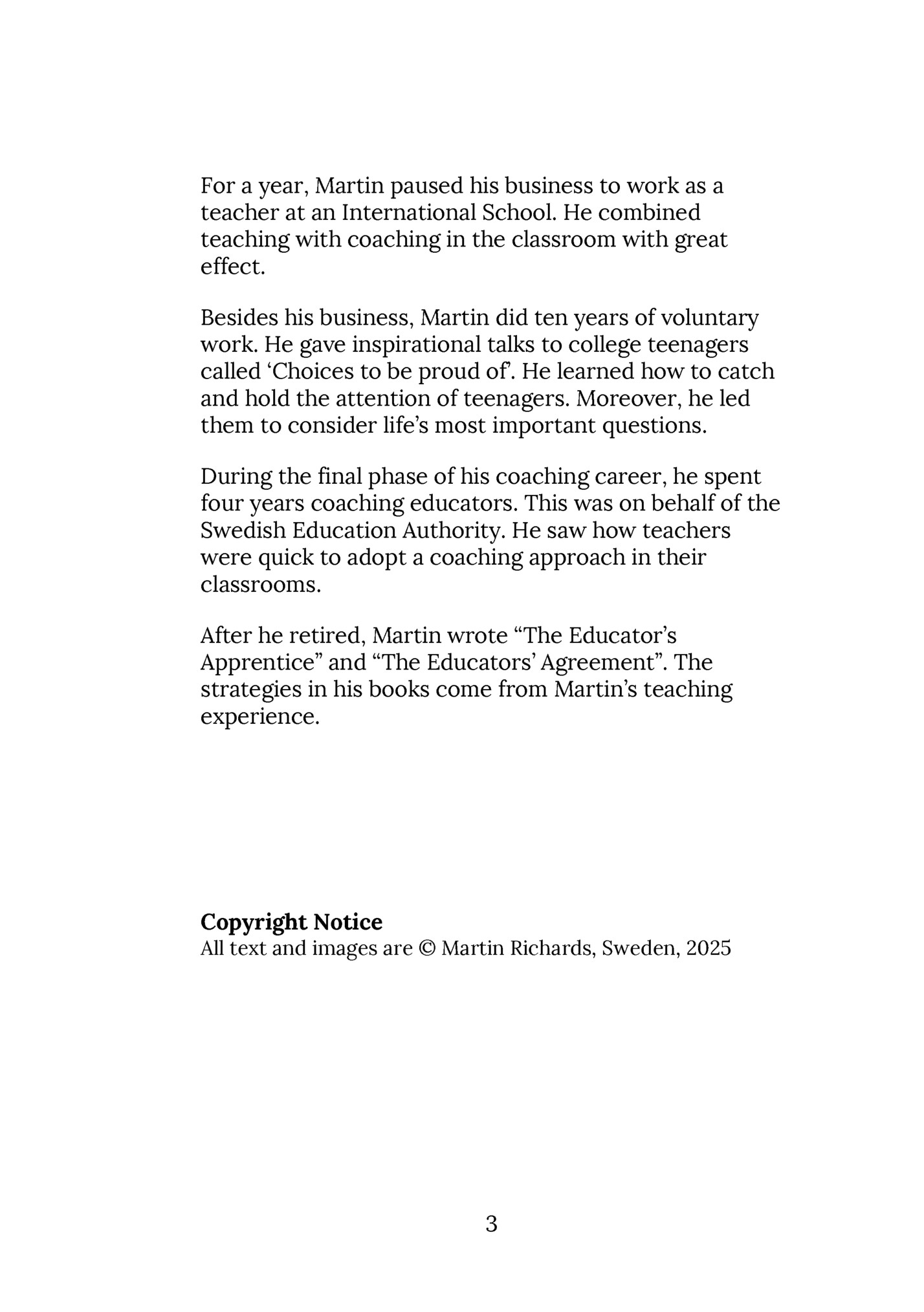
Navigating the Realities of Coaching in the Classroom Teaching is a profession built on heart, skill, and constant observation and adaptation. So it’s no surprise that many educators, upon discovering the principles of coaching—curiosity, empowerment, student voice—feel an immediate resonance. The coaching stance promises a more responsive, respectful, and relational way of engaging students. It seems to fit naturally with the kind of teacher we all aspire to be. And yet, as the case studies in this book reveal, good intentions and enthusiasm alone are not enough. Teachers new to coaching often face an uncomfortable gap between intention and impact. It’s not because they don’t care. It’s because coaching—authentic, studentcentered coaching—is not a strategy to bolt onto our teaching. It’s a mindset shift that must be embodied, contextualized, and carefully integrated. This book exists to help you through that messy middle. Each of the stories you’re about to read is a true-to-life portrait of a teacher doing their best—and sometimes missing the mark. They are not cautionary tales to critique, but invitations to reflect. They show what happens when coaching is rushed, misunderstood, misapplied, or used to mask deeper discomforts. They reveal blind spots many of us share. 4
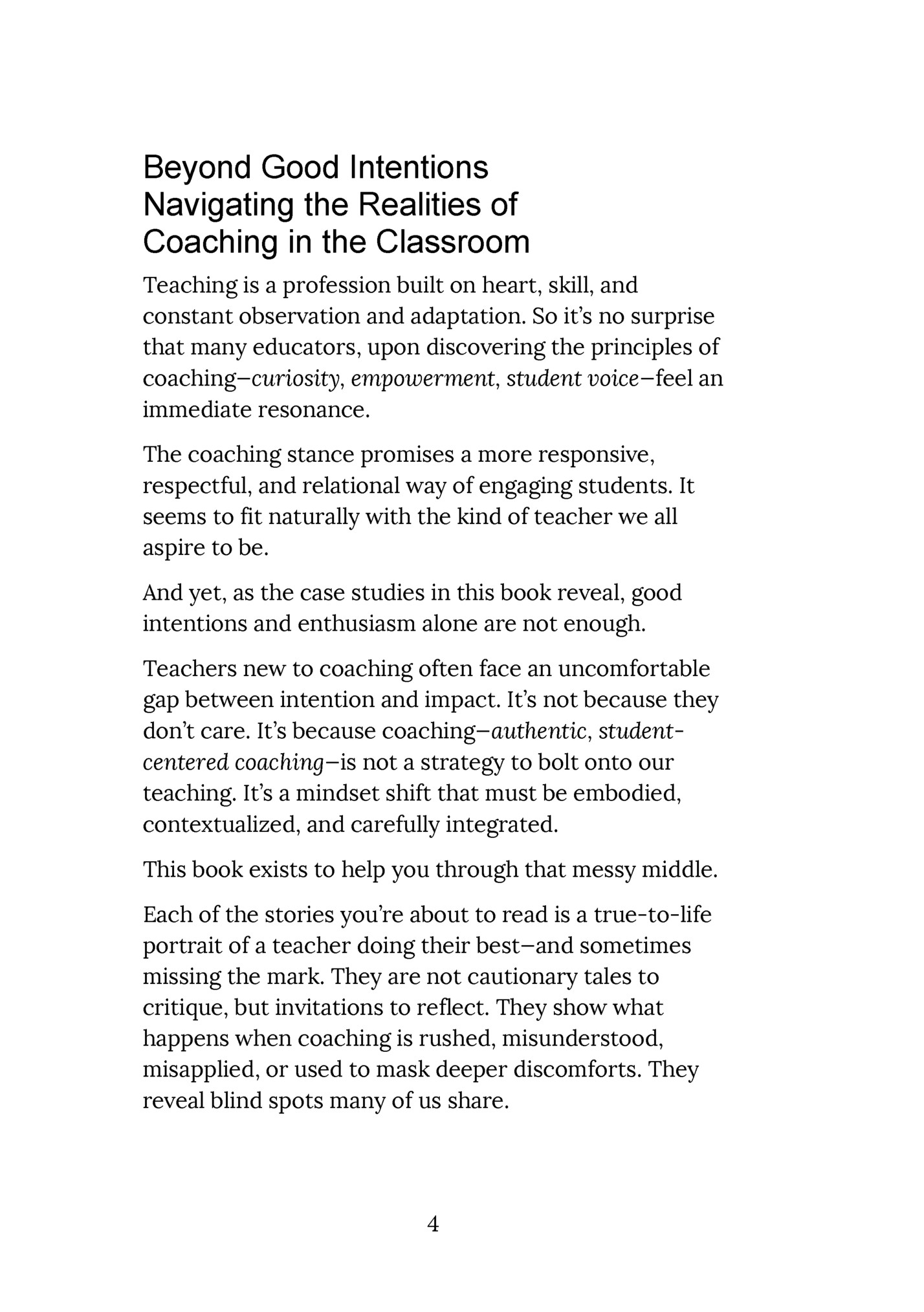
As you read, you’ll see that successful coaching isn’t about asking the perfect question or letting go of all structure. It’s about knowing when to guide and when to step back. It’s about listening deeply, building trust slowly, and designing learning experiences with both courage and care. So use these stories as mirrors. Notice your own reactions—your judgments, your sympathy, your insights. They will tell you something about your own teaching habits, your assumptions, and your readiness to shift. Let this be your starting point—not to get it perfect, but to get it honest. Coaching in the classroom doesn’t always go as planned. But when done with humility and reflection, it can transform not just your students’ learning—but your own. 5
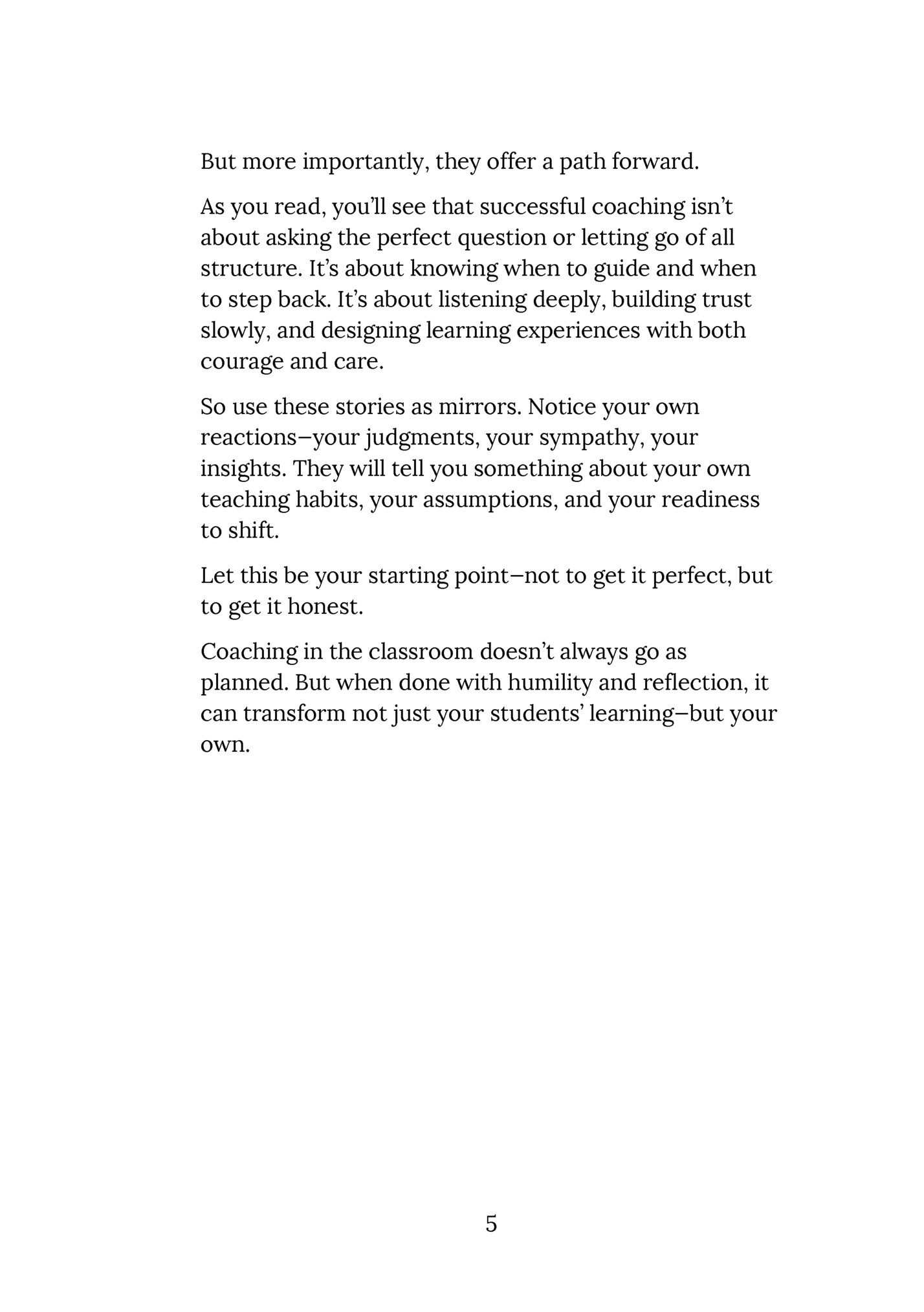
Each of these case studies reflects a real-world challenge teachers face when beginning to incorporate coaching into their classroom practice. These are not failures of character, but invitations to learn. Each offers a lesson not just in coaching—but in selfawareness, timing, and trust. These stories remind us the coaching stance is not a technique to be overlaid on teaching. It is a mindset, a relationship, and most of all, a practice—one that grows stronger with patience, reflection, and the willingness to start again. Brief Introductions Guide • • • • What are your first impressions when you read the brief introductions? Your reactions will tell you something about you and how you teach. What might you say to the teachers, if they were your colleagues or course companions? How are you supporting them? 6
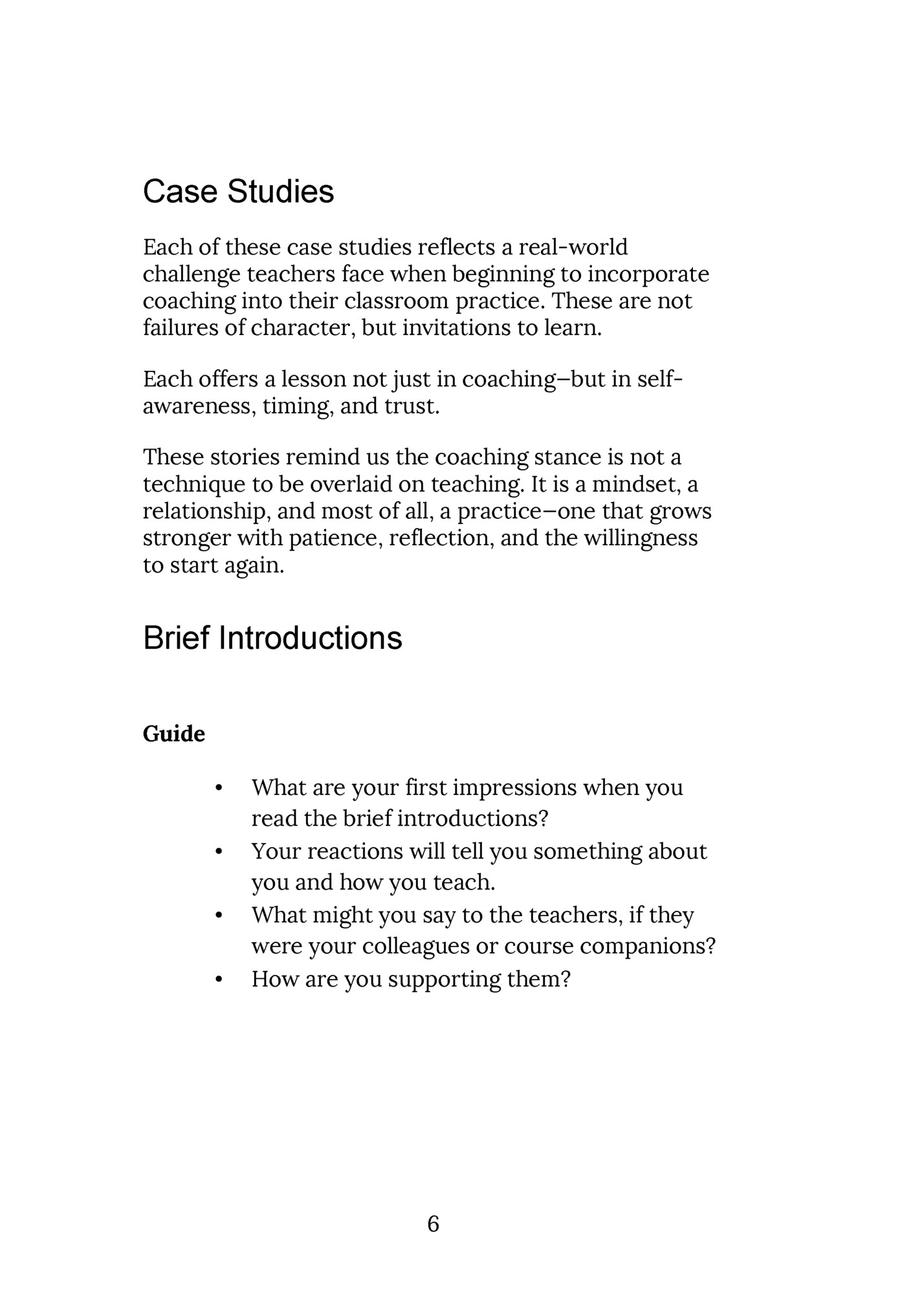
Sam was a newly certified and enthusiastic teacher and coach. His Year 9 class, usually restless, became his testing ground for coaching. He stopped giving instructions, and started every lesson with questions like, “What do you want to learn today?” and waited. But the students didn’t engage. They slouched. They asked, “Are we supposed to guess?” 7
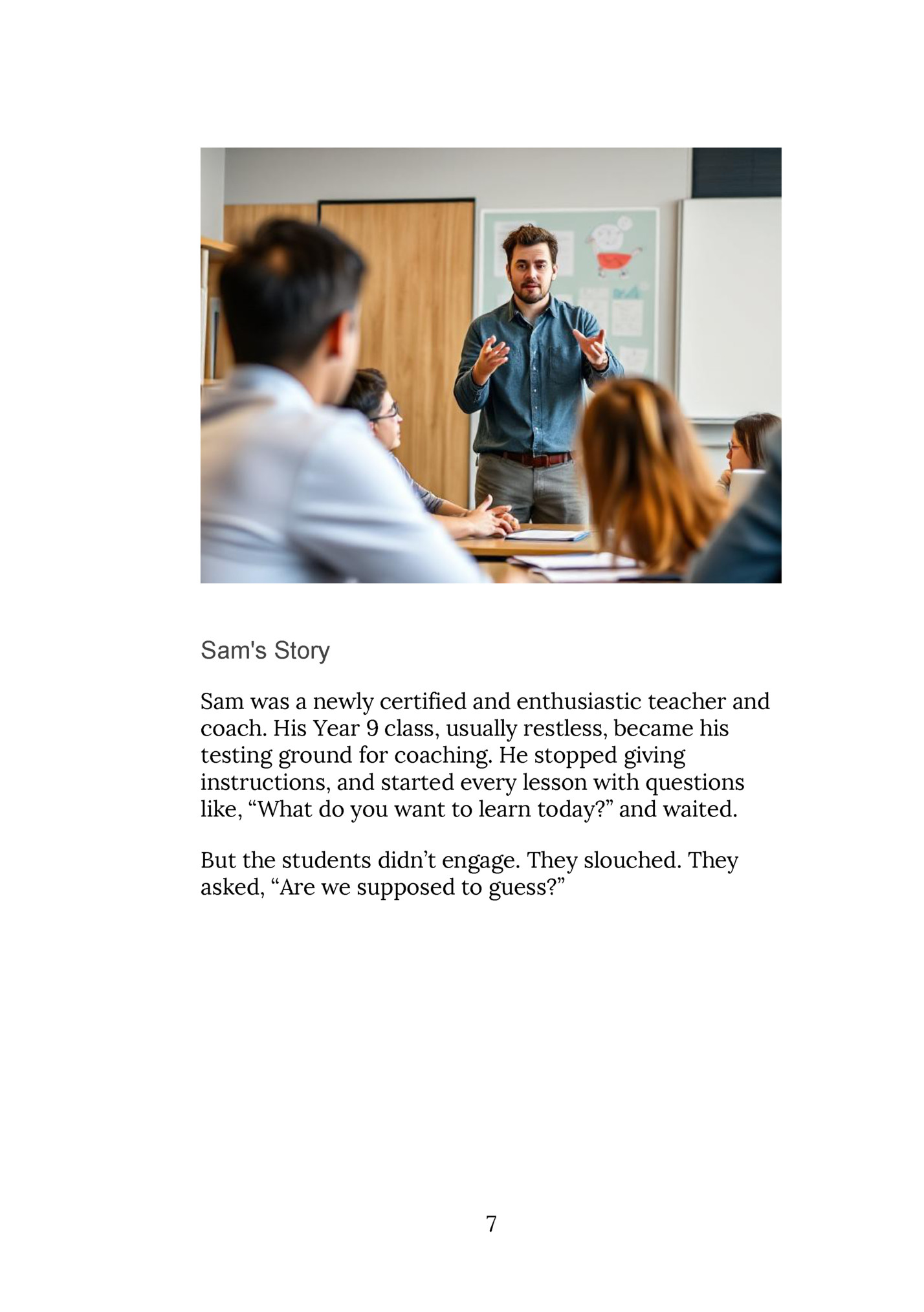
Priya was a respected teacher, firm but fair. When she trained in coaching, she hoped it would soften her leadership. But her coaching came out as veiled commands. “Don’t you think a mature student would be quiet now?” she asked one boy. He rolled his eyes. “Just say it, Miss.” 8
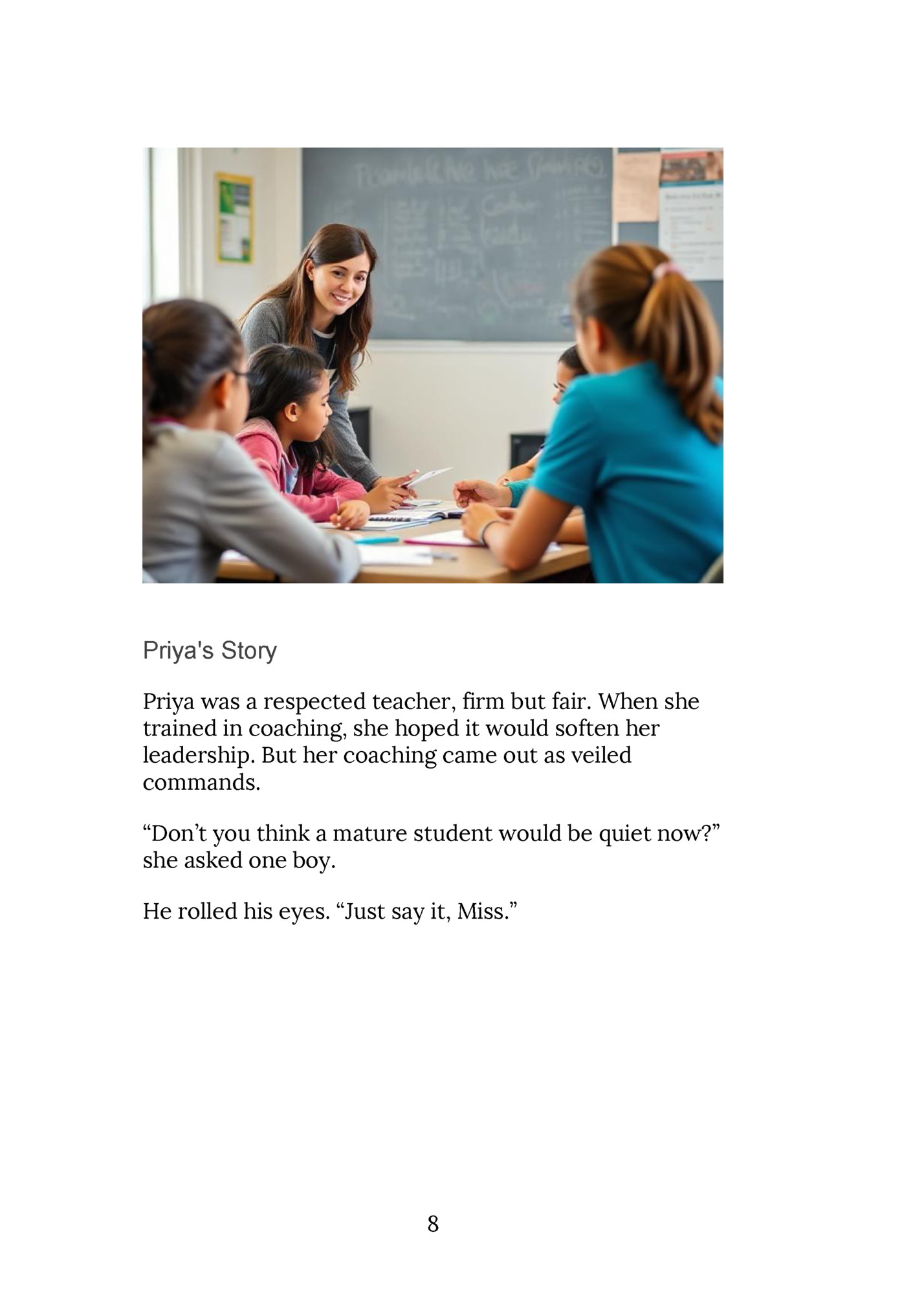
Tom had watched three webinars on coaching. He felt ready to try out some of the activities he had learned. He introduced reflective journals, peer feedback rubrics, and self-assessment grids to his Year 11 classroom. All within a week. Students were overwhelmed. “Another form, sir?” “Can't we just do the work?” 9
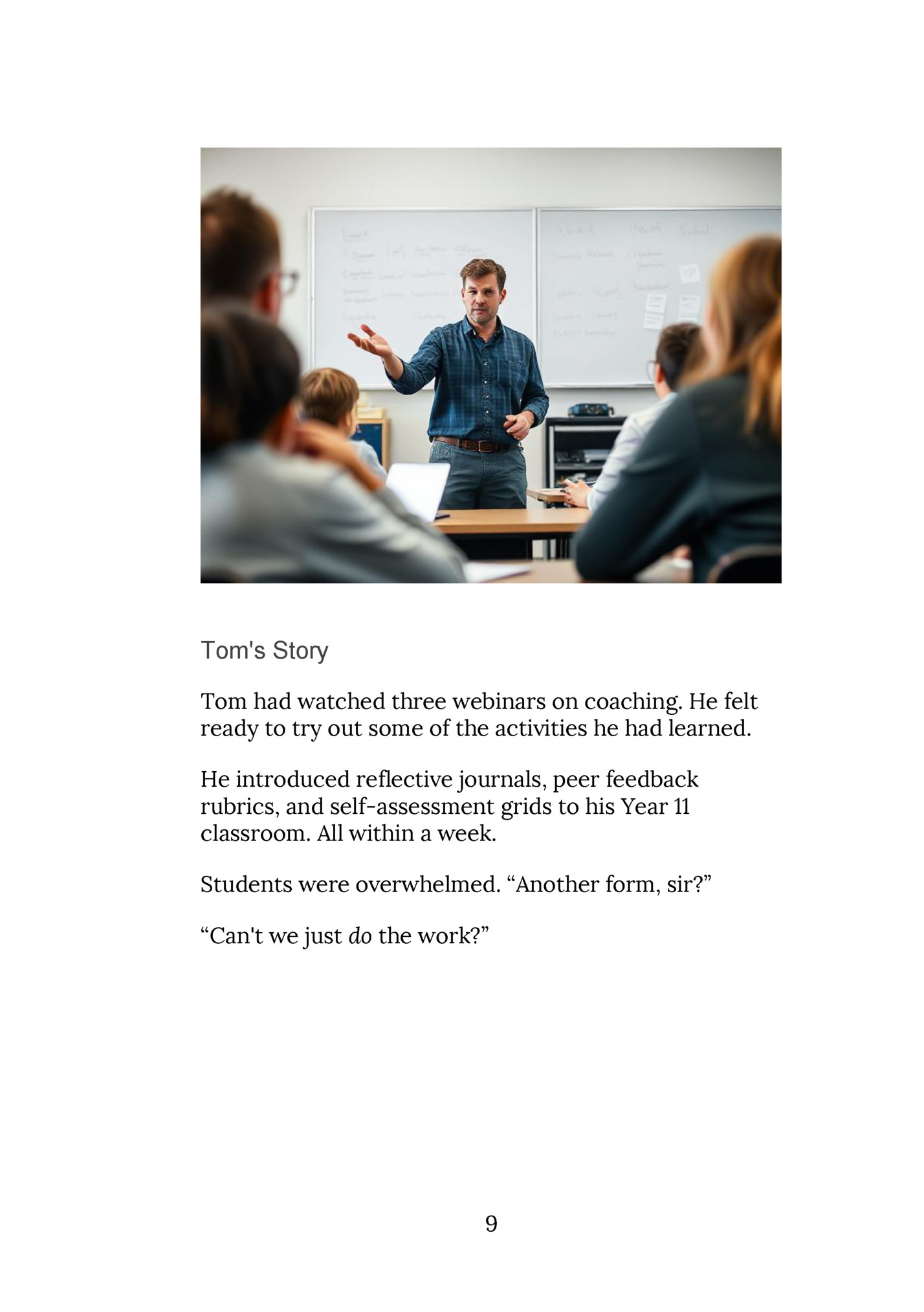
Fleepit Digital © 2021